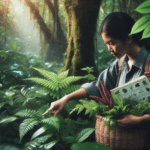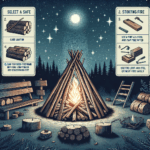The Ultimate Guide to Foraging: Tips and Tricks for Beginners
Foraging is the act of searching for and gathering wild food sources such as fruits, nuts, mushrooms, and herbs. It is a practice that has been around for centuries and has experienced a resurgence in recent years as more people look to connect with nature and consume locally sourced, organic foods. For beginners interested in foraging, it can seem like a daunting task to know where to start and how to safely harvest wild foods. That’s why we’ve put together this ultimate guide to foraging, with tips and tricks to help you get started on your foraging journey.
1. Do Your Research: Before heading out into the wild to forage, it’s important to do your research. Familiarize yourself with the local flora and fauna in your area, and learn to identify edible plants and mushrooms. There are many resources available online, as well as field guides and foraging classes that can help you become more knowledgeable about wild foods.
2. Start Slow: When you’re just starting out with foraging, it’s best to start slow and focus on a few easy-to-identify plants and mushrooms. Look for common edibles like dandelions, wild strawberries, and blackberries, and learn to recognize them in their various stages of growth.
3. Learn to Identify: One of the most important skills to develop as a forager is the ability to accurately identify wild foods. Take the time to study the physical characteristics of different plants and mushrooms, such as leaf shape, color, and texture, as well as any distinguishing features that can help you differentiate between edible and toxic species.
4. Harvest Ethically: When foraging, it’s important to practice ethical harvesting techniques to ensure the sustainability of wild food sources. Only harvest what you need, and leave enough behind for wildlife and future foragers. Avoid picking endangered or rare species, and always ask for permission if you’re foraging on private property.
5. Stay Safe: Foraging can be a fun and rewarding activity, but it’s important to stay safe when harvesting wild foods. Be aware of potential hazards like poisonous plants and mushrooms, and always wash and properly prepare your foraged foods before consuming them. It’s also a good idea to bring along a foraging buddy or let someone know where you’ll be foraging in case of emergencies.
6. Join a Foraging Group: If you’re looking to connect with other foragers and learn from experienced enthusiasts, consider joining a local foraging group or club. These groups often organize foraging walks, workshops, and events that can help you expand your knowledge and skills as a forager.
7. Experiment in the Kitchen: Once you’ve harvested your wild foods, it’s time to get creative in the kitchen! Experiment with different recipes and cooking techniques to incorporate your foraged finds into delicious meals and snacks. From wild salads and stir-fries to homemade jams and preserves, the possibilities are endless when it comes to cooking with wild foods.
Foraging is a rewarding and sustainable way to connect with nature and discover the abundance of edible plants and mushrooms that grow all around us. By following these tips and tricks for beginners, you can safely and responsibly enjoy the benefits of foraging while exploring the natural world around you. So grab your basket and field guide, and start foraging for your own wild food treasures today!



